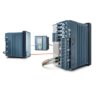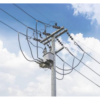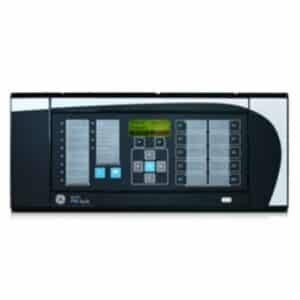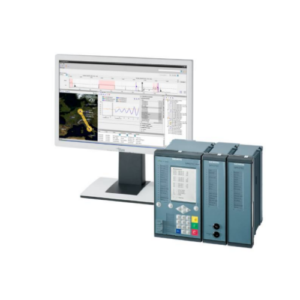Smart transition of energy automation systems
Description
Smart transition of energy automation systems
Smart transition for line protection
With Smart Transition you can innovate your existing SIPROTEC 4 line protection infrastructure step by step to the latest state of the art – line protection devices of the SIPROTEC 5 series. You can also integrate these into the existing line topology or gradually replace your existing devices.
The current SIPROTEC 5 line protection devices enable mixed operation of both device generations and thus a step-by-step transition from SIPROTEC 4 to SIPROTEC 5.
Smart transition of line protection applications
Application areas:
- 2 – 6 line end differential protection
- Transformer within protection zone
- Distance protection with teleprotection
- Transformer differential protection with integrated line protection
Your benefits:
- Mixed operation of SIPROTEC 4 and SIPROTEC 5
- Step-by-step replacement and expansion of individual substations
- Line differential protection of other systems remains in operation
- Short switch-off time during conversion
- Use of existing communication links
Smart transition for distributed busbar protection
With smart transition you integrate your existing SIPROTEC 5 feeder protection devices as bay units of the busbar protection SIPROTEC 7SS85 – based on IEC 61850-9-2 process bus.
Add SIPROTEC 5 merging units 6MU85 to new substation feeders and expand your SIPROTEC 7SS85 busbar protection system.
Benefits
- Compatible with all relevant process bus standards such as IEC 61850-9-2 and IEC 61869-9
- Sample and date/time synchronization via IEEE 1588v2/PTP
- Existing SIPROTEC 5 feeder protection devices can be used as bay units
- SIPROTEC 5 Merging Units digitalize the measured values directly at the process
- Back-up protection functions integrated in the SIPROTEC 5 merging units offer additional system security
- During commissioning all settings can be done with DIGSI 5 and the IEC 61850 system configurator directly via process bus network.
- Interoperability with multivendor merging units (IEC 61850 Edition 2.1 compliance recommended)
Smart transition for central protection
Reduced parallel wiring and backup functionalities save costs, increase availability and you additionally profit from central protection, control and monitoring. This solution is compatible with all relevant process bus standards such as IEC 61850-9-2 and IEC 61869-9.
Benefits
- Reduce parallel wiring
- Flexible positioning of the merging units depending on the locations of the current and voltage transformers
- Central control and monitoring
- Easy expansions by adding additional merging units
- During commissioning all settings can be done with DIGSI 5 and the IEC 61850 system configurator directly via process bus network.
- SIPROTEC 5 merging units handle the back-up protection tasks If the main protection is not available
Smart transition for central transformer protection
With smart transition for central transformer protection – based on process bus – you profit from central protection, control and monitoring. Reduced parallel wiring and backup functionalities save costs and increase availability. This solution is compatible with all relevant process bus standards such as IEC 61850-9-2 and IEC 61869-9.
Benefits
- Reduce time-consuming parallel wiring
- Flexible positioning of the merging units depending on the locations of the current and voltage transformers
- Appropriate for individual merging units per transformer or on single central merging unit
- Central control and monitoring
- During commissioning all settings can be done with DIGSI 5 and the IEC 61850 system configurator directly via process bus network
- SIPROTEC 5 merging units handle the back-up protection tasks if the main protection is not available
- Open for third-party merging units according IEC 61850-9-2LE
Explore the comprehensive range of Siemens General Protection System with us!








Reviews
There are no reviews yet.